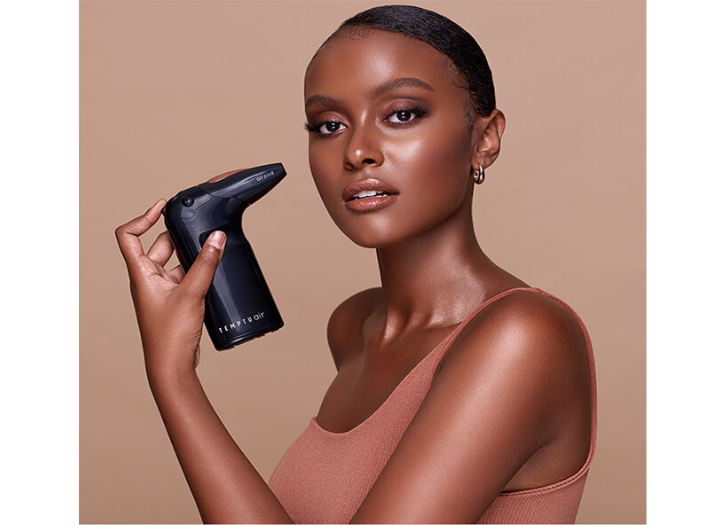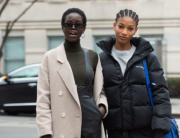Airbrush makeup is makeup sprayed onto the skin using an airbrush machine instead of being applied with sponges, brushes, fingers, or other methods.
Airbrush makeup has become more popular with the advent of high-definition video and television (HD). Traditional powder or liquid based make-up can settle and appear in pores and wrinkles and be visible on HD film. As the makeup is sprayed on, it connects with the skin as millions of droplets of formula. The formula can create an even, sheer, natural appearance to the skin that, if applied properly for a natural look, can appear natural and non-heavy like traditional makeup.
Airbrush makeup wears longer than traditional powder or liquid foundation, and is able to stay put upwards of 12–24 hours. It can be used to cover five o’clock shadows for men. Airbrush makeup is also available for eye shadow, blush, eyebrows and lips and can be layered, shaded, highlighted and contoured.
Airbrushing for makeup utilizes a freehand technique to apply makeup while manipulating aspects such as distance and air pressure to produce certain effects and coverage. Airbrush makeup artists will either use a circular motion or forward-back motion with the airgun when applying foundation. Both dual-action and single-action airbrushes can be used for airbrushing makeup and require slightly different techniques.A dual-action airbrush allows the user to control airflow by depressing the trigger with the index finger and drawing it backwards. This draws air from the compressor.
The further the trigger is depressed, the more makeup is released. The advantage to using a dual-action airbrush is that one can use the air as a guide before allowing makeup to pass through the nozzle. Air is also used to dry the makeup after application. Makeup is also mixed in the cup by allowing a small amount of air to flow into it, thereby mixing two pigments. This technique is known as ‘back-bubbling’.A single-action airbrush is generally considered easier to use because depressing the trigger releases a fixed ratio of makeup to air.
However, in order to achieve different levels of coverage and detail the nozzle has to be changed between applications.Generally an airbrush makeup artist will work with a PSI range between 0-35 PSI. Many compressors designed for personal use in the home will not achieve airflow greater than 15 PSI. A low PSI is preferable when airbrushing makeup around the face and eyes while full body application (such as covering blemishes or tanning) is easier and faster with a higher PSI.Airbrush makeup is applied by layering several passes of makeup.This allows the artists to build upon previous layers to produce subtle changes. When applying foundation between 6-12 drops of makeup are used. The makeup is sprayed onto the face at a distance of 6-12 inches.
Stencils are commonly used to assist the application of difficult areas such as eye-liner. Stencils are also available for body-art and temporary tattoos.
Photo Credits: www.Temptu.com







Add Comment